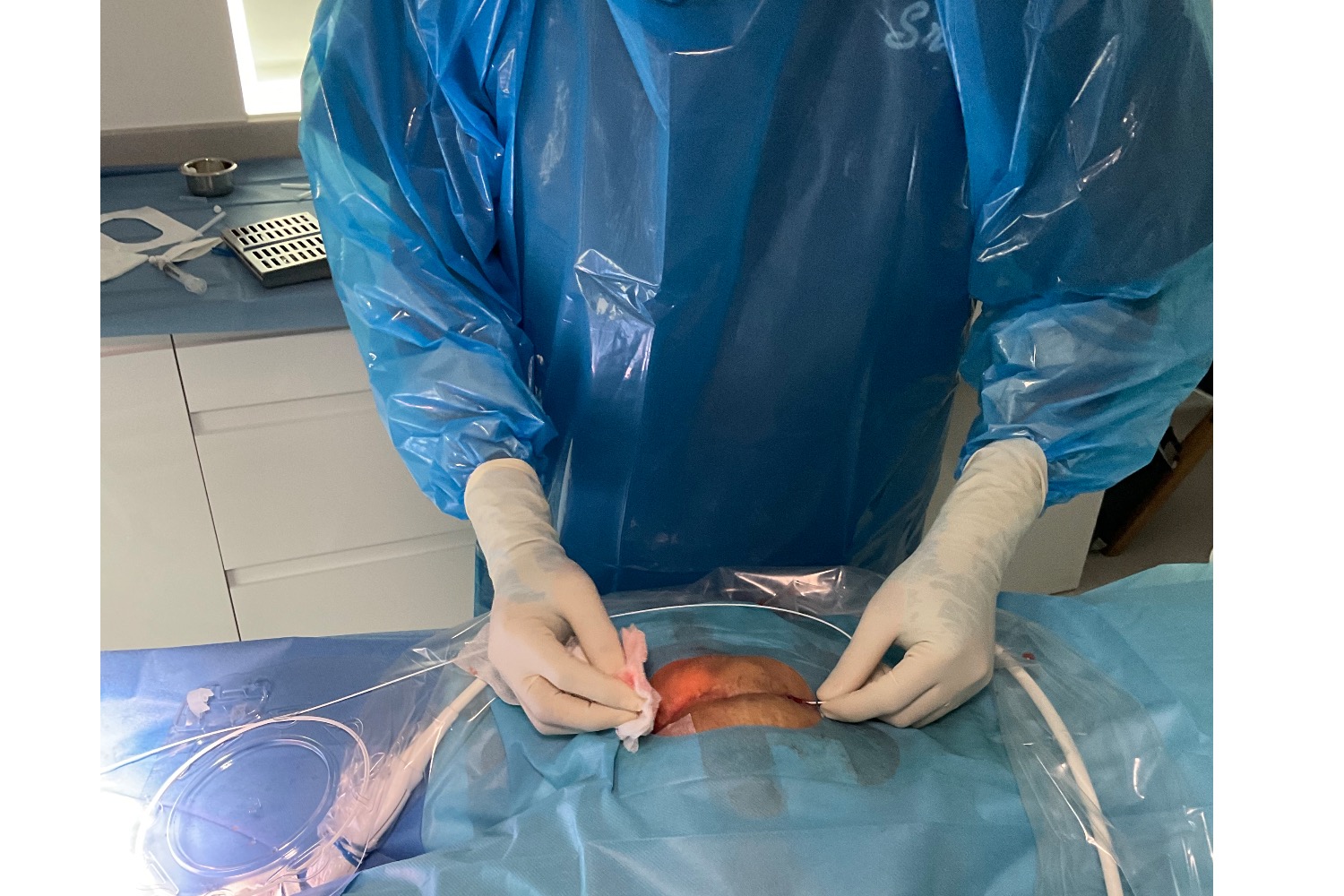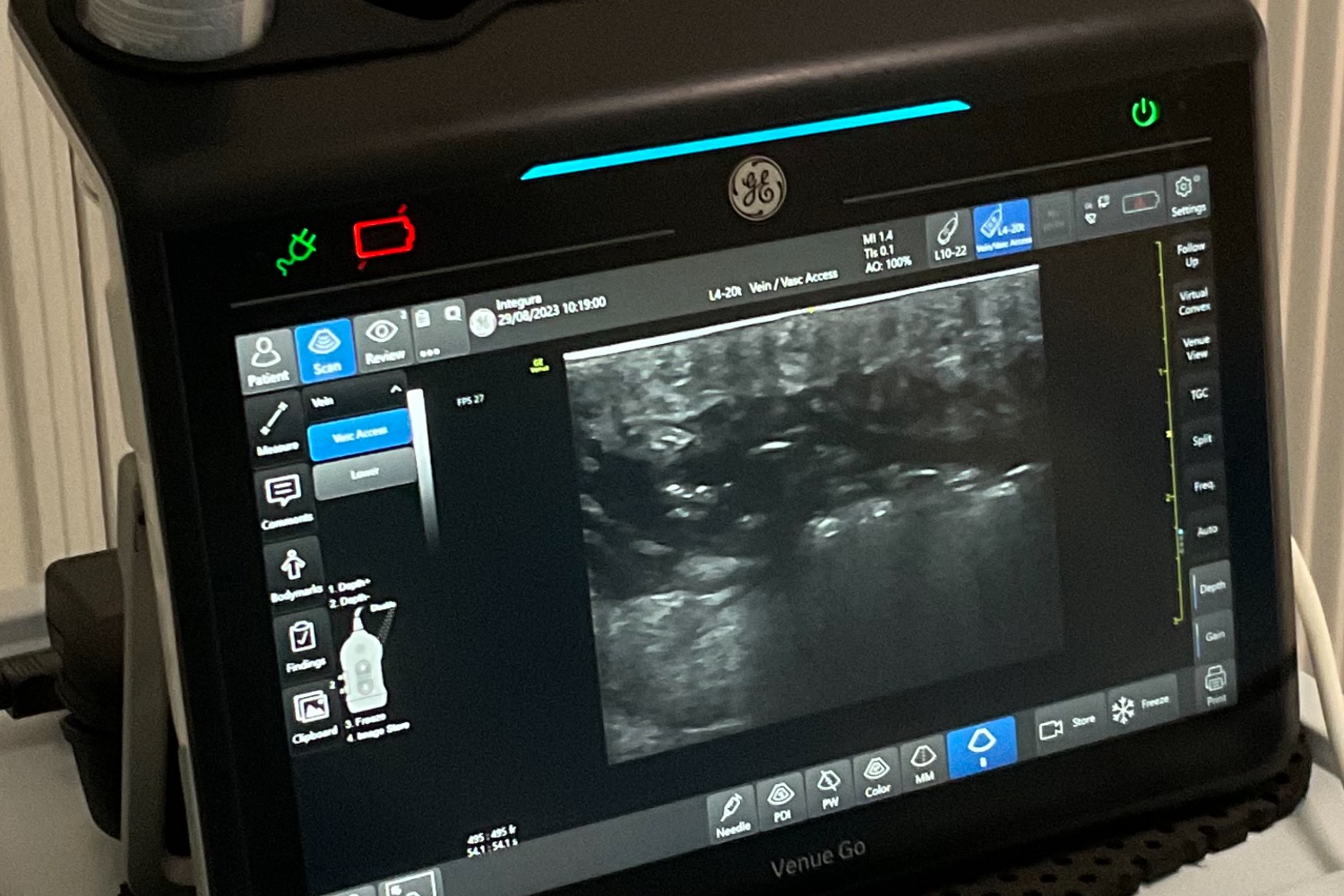Ultrasound Guided Laser-Assisted Pilonidal Sinus Closure
What is pilonidal disease cyst sinus?
The pilonidal cyst is a long-standing, recurring pain, discharge and lump in the lower back or coccyx region. This can happen in any body part but is most commonly seen in the lower back. Typically, a tuft of hair gets entrapped in a pit (sinus- the medical term for cul-de-sac). The pit gets inflamed and infected, leading to discharge. The discharge from the opening can be blood-stained and has foul sebum and sometimes bits of hair shaft. Secondary or other openings can be present on either side of the midline, sometimes far out to the buttocks and towards the anus.
The symptoms usually start in the twenties and males outnumber females. Female patients are usually younger than the males. This is most commonly seen in hairy and usually obese.
Patients present with discharge, pain, and tender swelling at the bottom of the spine. Some patient presents with abscess.
How do you avoid getting repeated infections?
- Keep the area hair-free.
- Stop smoking.
- Reduce weight.
- Avoid long continuous periods of sitting on a chair/seat
- Wear cotton underwear to absorb sweat.
- Boost immune system.
Treatment options
Conservative:
Symptoms for the first time can be resolved by cleaning the area and removing all hair from the region. Long sitting, like driving long distances and sitting on a chair for hours, must be avoided.
Surgical management :
In acute abscess, drainage of the pus is done. In long-standing and recurrent conditions, simple excision removal of the sinus to complex plastic surgery like reconstruction of the midline is done. All these procedures involve long-term wound care and associated difficulties and poor quality of life.
Laser-assisted closure
With laser treatment, heat is used to burn the lining of the tract. The burning thus caused results scar formation. The resulting scar closes the tract. The laser is introduced through the preexisting opening or newly created 3mmin size.
This procedure involves making a small hole under local anaesthesia and destroying the lining of the sinus( tract) with laser heat. All the side branches if any are also destroyed by the laser at the same time.
As the resulting wound is small in size, it will heal rapidly with no disturbance to activities of daily living.
There is no need for a flap surgery or prolonged need for dressing changes. The postoperative pain and discomfort are reported as minimum.
Advantages of Laser treatment of pilonidal cysts and sinuses
- No new wound or wound less than 5mm in size.
- Only discomfort for a few days – very little pain
- Small wound
- Excellent results (90-98% success rate)
- Clinic procedure
- Cost-effective and cost-beneficial
- Maximum patient comfort and quick recovery


Ultrasound Guided Laser Treatment
Surgeries are usually performed under general anaesthesia or spinal (regional ) anaesthesia. Laser-assisted closure is done under local anaesthesia. Mr Sridhar uses ultrasound-guided tumescent anaesthesia, where anaesthesia is injected around the sinuses under direct vision. This avoids the extra costs, risks, preparation and difficulties associated with general anaesthesia.
Mr Sridhar offers soft tissue ultrasound to identify the tracks and to treat them under direct vision. In endoscopic procedures, one has to introduce an instrument into the tract. This can push the debris further into the tract and can be difficult to remove unless a counter-puncture is made to extract it. This is avoided in the use of ultrasound.
Procedure | Cost |
Ultrasound guided laser assisted closure package | £2000-£2500 |
Frequently Asked Questions
- Do I have to take time off?
- Will I need regular dressing changes?
- When can I take a shower?
- Can I drive immediately after surgery?
There is no need for time off but most people have this procedure on a Thursday or Friday and take the weekend off from work.
The frequency and need for dressing changes are not as high as that for open surgery. Each person’s condition is different. On average the dressings are required for two weeks. The dressings are changed every 48 hours. If Opsite dressing is used there is no need for a change of dressings.
After 24 hours. You have to keep the area dry after a shower. The swimming pool is to be avoided until the wound is fully healed.
No. You cannot drive immediately after the procedure. You can do so after 12 hours. You can either get a friend to drive you home or take a taxi.
Patient Information Leaflet | |
copy of consent form |
Send us
your message
There are three 3 easy ways to contact us:
-
Call us now on 07492 185412
-
Request a callback, using the form below
-
Send us an email care@integura.co.uk, or fill in the form below.
CLINIC ADDRESS
Integura
No 7 Blyth Road
Bromley BR1 3RS
REGISTERED ADDRESS
Adithya Enterprises Limited
97b plaistow lane
Bromley BR1 3AR
Copyright by Integura 2022. All rights reserved.
Copyright by Integura 2022. All rights reserved.

